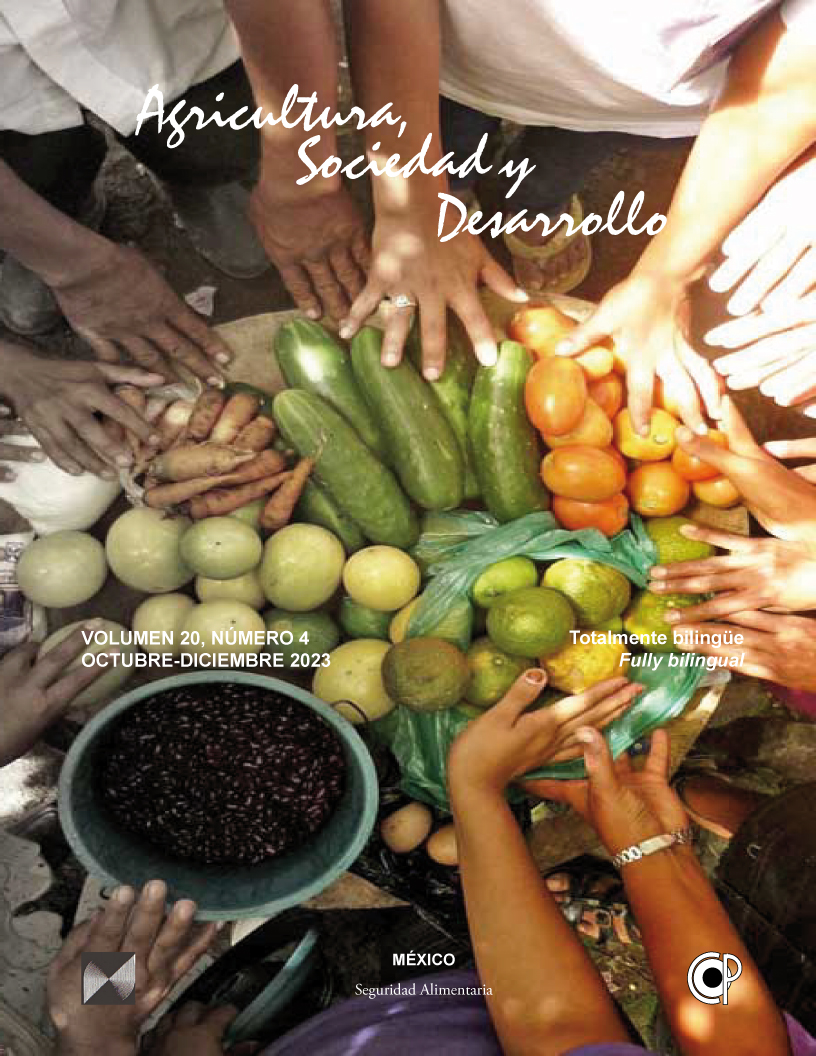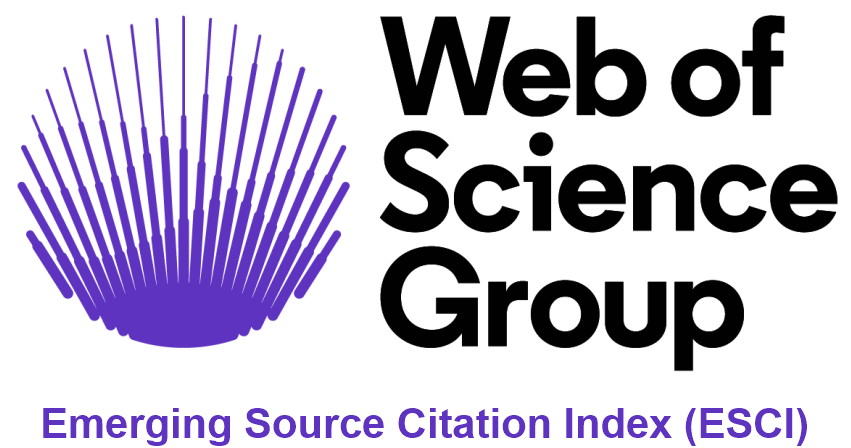Socioeconomic characteristics of families and their use of forest resources in three communities of Cintalapa, Chiapas, Mexico
DOI:
https://doi.org/10.22231/asyd.v20i4.1615Keywords:
food, housing, natural resources, povertyAbstract
This research intended to define the socioeconomic characteristics of families and their use of forest resources in three rural communities in the municipality of Cintalapa Chiapas, Mexico. 80 “ejidatarios”; heads of families who possess land areas were interviewed. Evidently, 57.1% of “ejidatarios” are farmers and 30% are cattle ranchers. The weekly family income is $780.60 and 75% considered this to signify poverty. 83% of “ejidatarios” in Venustiano Carranza have food supply problems; in Francisco I. Madero this is 51.4% and in Triunfo de Madero 51.5%. 100% of families live in overcrowded homes. The main crop is maize with yields of 2.5 t/ha and the most important livestock activity is cattle ranching with an average of 20 head of cattle per producer. The species with the highest value in the Cultural Importance Index are the cattle kept in ranches. All the backyards grow species that complement food consumption, mainly fruit. 48.7% of “ejidatarios” obtain part of their food from the forest by hunting and gathering. In these rural communities, more than 80% receive some type of government support.
References
Álvarez P. 2006. Los recursos de uso común en México: un acercamiento conceptual. Gaceta Ecológica. Instituto Nacional de Ecología, México 79. 5-17.
Apodaca C, Juárez JP, Ramírez B, Díaz R, Rodríguez FJ, Vázquez V. 2020. La alimentación familiar de pequeños productores de café y variabilidad climática en Huehuetla, Puebla, México. Agricultura, Sociedad y Desarrollo, 17(2). 375–396. https://doi.org/10.22231/asyd.v17i2.1350. DOI: https://doi.org/10.22231/asyd.v17i2.1350
Ávila D, Rosas O, Tarango L, Martínez J, Santoyo E. 2011. Conocimiento, uso y valor cultural de seis presas del jaguar (Panthera onca) y su relación con éste, en San Nicolás de los Montes, San Luis Potosí, México. Revista Mexicana de Biodiversidad 82(3). 1020-1028. DOI: https://doi.org/10.22201/ib.20078706e.2011.3.685
Arce IAN, Armijo CN. 2011. Uso y manejo de los recursos naturales. Capítulo 3. In: Pozo C, Armijo CN, Calmé S. Riqueza Biológica de Quintana Roo. Un análisis para su conservación. Tomo 1. CONABIO, ECOSUR, Gobierno del Estado de Quintana Roo. Quintana Roo, México. pp: 112-115.
Barrera A, Gómez A, Vázquez C. 1977. El Manejo de las Selvas por los Mayas: sus implicaciones Silvícolas y Agrícolas. Biótica 2(2). 47-61.
Brauscupé S. 1992. Indigenous perspective on international development, Akwe: Kon Journal. 60 p.
Carabias J. 2009. Manejo de recursos naturales y calidad de vida. In: Chediack, S.E., (comp), Monitoreo de biodiversidad y recursos naturales: Comisión Nacional para el Conocimiento y Uso de la Biodiversidad. México, D.F. pp: 29-37.
CEDERSA (Centro de Estudios para el Desarrollo Rural Sustentable y la Soberanía Alimentaria). 2014. El minifundismo: una realidad del siglo XXI. CEDERSA. 20 p.
CDI-PNUD. 2006. Regiones indígenas de México. ISBN 970-753-064-2. 147 p. consultado:10/08/2018. http://www.cdi.gob.mx/regiones/regiones_indigenas_cdi.pdf
CONAPO. 2015. Índice de marginación por entidad federativa y municipio 2015. Fecha de consulta 11/08/2018. https://www.gob.mx/conapo/documentos/indice-de-marginacion-por-entidad-federativa-y-municipio-2015.
CONAFOR (Comisión Nacional Forestal). 2022. Estado que guarda el Sector Forestal en México. Comisión Nacional Forestal, México. 459 p.
Consejo Nacional de Evaluación de la Política de Desarrollo social. S/A. La pobreza rural en México. CONEVAL, Pág. Web: https://www.coneval.org.mx/Medicion/MP/Documents/PATP/Pobreza_rural.pdf
Davis C, Gallardo H, Lachlan K. 2010. Talking straight about communication research methods. Kendall Hunt Publishing Co. Dubuque. 448 p.
FAO, IFAD, UNICEF, WFP and WHO. 2023. The State of Food Security and Nutrition in the World 2023. Urbanization, agrifood systems transformation and healthy diets across the rural–urban continuum. Rome, FAO. 283 p. https://doi.org/10.4060/cc3017en. DOI: https://doi.org/10.4060/cc3017en
FAO. 2021. Evaluación de los recursos forestales mundiales 2020. Informe principal. Organización de las Naciones Unidas para la Alimentación y la Agricultura. 170 p. Roma. https://doi.org/10.4060/ca9825es DOI: https://doi.org/10.4060/ca9825es
FAO. 2018. Panorama de la pobreza rural en América Latina y el Caribe 2018. Santiago de Chile, 112p.
Guevara ML, Téllez MB, Flores M. 2015. Aprovechamiento sustentable de los recursos naturales desde la visión de las comunidades indígenas: Sierra Norte del Estado de Puebla. Nova Scientia. Universidad De La Salle Bajío León, Guanajuato, México. 7(14). 511-537. DOI: https://doi.org/10.21640/ns.v7i14.94
INAFED. 2010. Instituto Nacional para el Federalismo y el Desarrollo Municipal. Sistema Nacional de Información Municipal. Consulta 11/08/2018. http://www.snim.rami.gob.mx/
INEGI. 2010. Censo de Población y Vivienda 2010. Fecha de consulta 02/08/2018. http://www.beta.inegi.org.mx/proyectos/ccpv/2010/default.html?init=2
Lazos RA, Moreno CP, Guevara S, Gallardo C, Galante E. 2016. El uso de los árboles en Jamapa, tradiciones en un territorio deforestado. Madera y Bosques 22(1). 17-36. DOI: https://doi.org/10.21829/myb.2016.221475
Lazos RA, Moreno CP, Galante E. 2013. Empresa Rural Verde: desarrollando criterios de sustentabilidad con la comunidad rural. Revista Forum de Sostenibilidad (6). 3-16.
López LN, Chan JG. 2016. Marco conceptual del manejo de recursos naturales. Revista Latinoamericana de Recursos Naturales 12(1). 27-35.
Martínez JA, Arellano RE. 2010. Uso comunitario de los recursos naturales en el Ejido Lagunillas, Jalisco, México. Ambiente y Desarrollo, Bogotá, Colombia. 16(26). 96-109.
Mohamed-Katerere JC, Smith M. 2013. La función de los ecosistemas en la seguridad alimentaria. Unasylva, 241(64). 14-22.
Padoch C, Sunderland T. 2013. La ordenación del paisaje, vía para el logro de una mayor seguridad alimentaria y mejores medios de subsistencia. Unasylva 241(64). 4-13.
Snipp M. 1989. Americans Indians: The first of this land. Rusell Sage Fundation. New York USA. pp: 107.
Stloukal L, Holding C, Kaaria S, Guarascio F, Gunewardena N. 2013. Los bosques, la seguridad alimentaria y el género.
Tapia LA. 2012. Recurso natural, sustentabilidad, conservación, preservación: conceptos-jurídico ambientales en las políticas públicas mexicanas. Derecho Ambiental y Ecología, 49. 71-78.
Toledo VM, Barrera-Bassols N, García E, Alarcón P. 2008. Uso múltiple y biodiversidad entre los mayas yucatecos (México). Interciencia 33(5). 345-352.
Toledo VM. 1990. El proceso de ganaderización y la destrucción ecológica de México. In: Medio ambiente y desarrollo en México. Leff E, coord. UNAM-CIIH-Porrúa. México, D.F. pp: 191-22.
Vesarez-Zúñiga VF. 2022. Pobreza rural y canasta básica alimentaria en la comunidad General Cárdenas, municipio de Cintalapa, Chiapas. Estudios Sociales. Revista de Alimentación Contemporánea y Desarrollo Regional, 32(59). 1-32. https://doi.org/10.24836/es.v32i59.1200 DOI: https://doi.org/10.24836/es.v32i59.1200
Published
How to Cite
Issue
Section
License
Copyright (c) 2023 Cristhian Adolfo Velázquez Muñoz, Benito Ramírez Valverde, José Pedro Juárez Sánchez, Gustavo Ramírez Valverde, José Pablo Prado Córdova

This work is licensed under a Creative Commons Attribution-NonCommercial 4.0 International License.
Authors who publish in this journal accept the following conditions:
- The authors retain the copyright and transfer to the magazine the right of the first publication, with the work registered with the Creative Commons attribution license, which allows third parties to use what is published as long as they mention the authorship of the work and the first publication in this magazine.
- Authors may make other independent and additional contractual arrangements for non-exclusive distribution of the version of the article published in this journal (e.g., including it in an institutional repository or publishing it in a book) as long as they clearly indicate that the work It was first published in this magazine.
- Authors are permitted and encouraged to publish their work on the Internet (for example on institutional or personal pages) before and during the review and publication process, as it can lead to productive exchanges and greater and faster dissemination of the work. published (see The Effect of Open Access).













